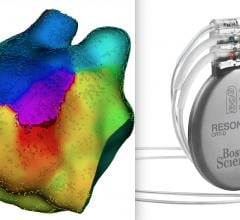Tom Jones, M.D., director, cardiac cath labs, Seattle Children’s Hospital, explains the importance of the heart team ...

In the electrophysiology (EP) lab, hundreds of thousands of used devices are sent to reprocessors every year to get ...
September 14, 2021 – Us2.ai, a Singapore-based medtech firm backed by Sequoia India and EDBI, has received U.S. Food and ...
Providing exceptional cardiovascular care for patients to achieve the best possible outcomes is the number one goal for ...
September 14, 2021 – MedAxiom, an American College of Cardiology (ACC) company, released a report detailing cardiac ...
September 13, 2021 — The European Society of Cardiology (ESC) and European Association for Cardio-Thoracic Surgery ...
September 13, 2021 — The growing use of mechanical circulatory support (MCS) may contribute to high levels of moral ...
Cardiac positron emission tomography (PET) is growing in popularity among cardiologists because it provides the ability ...
September 13, 2021 — Ablation plus cardiac resynchronization therapy (CRT) is superior to pharmacological rate control ...
About 80% of cardiovascular diseases (CVD) are preventable. This is why it is important to identify the people at ...
September 13, 2021 — Early coronary angiography in out-of-hospital cardiac arrest (OHCA) patients without ST-segment ...
When performing radiofrequency (RF) ablation to treat cardiac arrhythmia, medical professionals must balance the safety ...

Artificial intelligence (AI) is growing in all areas of medicine and was the topic of several advanced technology ...
September 8, 2021 — Adding systematic fractional flow reserve (FFR) assessment to coronary angiography does not reduce ...
September 8, 2021 — Continuous heart rhythm monitoring – with anticoagulation if atrial fibrillation is detected – does ...
Change Healthcare Cardiology Hemodynamics is an integrated hemodynamic monitoring system for monitoring vital signs and ...
September 7, 2021 — Carotid artery surgery and stenting have comparable long-term effects on fatal or disabling stroke ...
September 7, 2021 — Remote monitoring of implantable cardiac monitors (ICMs) is highly effective for early detection of ...

September 3, 2021 — Here is the list of the most popular content on the Diagnostic and Interventional Cardiology (DAIC) ...


 September 15, 2021
September 15, 2021














